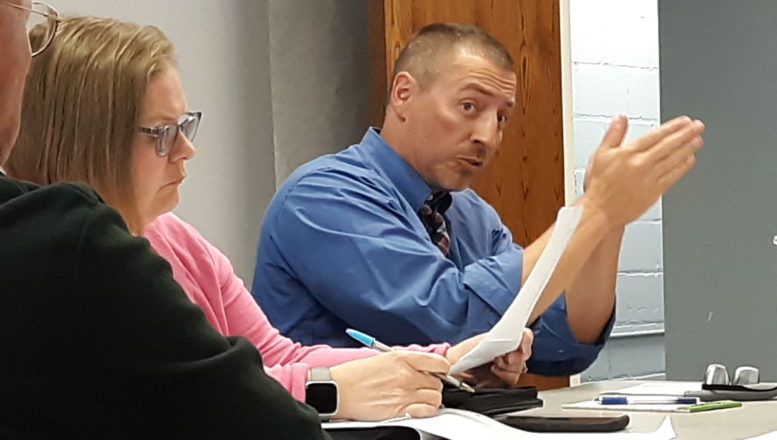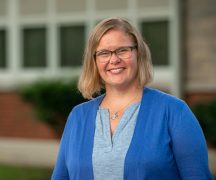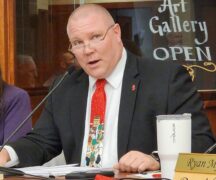By JAN LARSON McLAUGHLIN
BG Independent News
The Bowling Green Board of Education members came to a couple conclusions Wednesday evening as they debated how to pay for a new high school.
First, a levy should be on the ballot in November.
And second, the issue should raise $70 million.
But left unanswered was where the money would come from – property tax, or some type of split between property and income taxes.
The board will hold a special meeting to make that final decision on May 31, at 1 p.m., in the school administration offices.
With interest rates and inflation climbing, the board agreed that waiting will only cost more money.
“The cost of everything is going up,” said David Conley, financial consultant to the school district. “There just doesn’t appear to be an end in sight.”
Just since the last meeting in March about financing a new high school, the architectural firm working on the project said the costs have jumped from the original estimate of $58 million. Even with cutting out some “vital areas” and creating smaller classrooms, the project estimate grew to $61 million. The realistic estimate was closer to $66 million.
The board decided that $70 million is a “safe number.”
The depressing realization was that five years ago the district tried to get a levy passed to replace two elementaries and the high school – all for $72 million.
“Look at how much it’s gone up in five years,” board member Ginny Stewart said. “The longer we wait, the more expensive it gets. It doesn’t make any sense to wait.”
The board agreed that the November ballot would also be best since school issues tend to have higher passage rates when more people show up to vote.
“November is your best month,” Conley said, citing past election results.
But tougher to decide is what type of tax will get voter approval.
“Which of these is going to be the most palatable to the community,” Stewart said.

A compromise of splitting the issue between property and income taxes would tax everyone, board President Jill Carr said.
The board is apprehensive about putting a tax issue on the ballot since the last three efforts to fund a new elementary school failed – the last one by just 32 votes.
But there is some confidence that a less controversial goal of a new high school rather than a new consolidated elementary, could get voter support.
“I think we all know we’re doing what’s right for the kids and the community,” board member Tracy Hovest said.
Conley walked the board through some funding options for a new high school.
With property taxes, the addition of new residents and new businesses in the district help bring down the amount collected from the original property owners. The district’s tax base is about 30% businesses.
With income taxes, if the community grows, the revenue will grow. But only residents of the district pay income taxes – not businesses. Income taxes place more burden on the poor in the community.
However, the district is sensitive to agricultural property owners, who have said they will support an increase in income taxes but not property taxes. But voting records show that the rural areas of the district didn’t vote in favor of the last proposal that split the cost 50/50 between property and income taxes.
The district has also heard complaints from large rental property owners in Bowling Green, who oppose property taxes to pay for school buildings.
Social Security income is not taxed by either property or income taxes, Conley said.
To give the board a sample of funding options, Conley plugged numbers into a formula that would raise $70 million for a new high school. The numbers were based on a house value of $100,000 and median family income of $66,215.
Those options were:
- Straight property tax of 5.57 mills over 30 years, which would cost $196 a year or $16 a month for median family.
- 50/50 split of property and income tax, requiring 2.8 mills in property tax for 30 years and 0.5% income tax increase for 14 years. The result would be $428 a year or $36 a month for the median family.
- 70/30 split of property tax and income tax, requiring 3.5 mills in property tax for 30 years and 0.5% income tax increase for eight years – costing the median family $467 the first eight years, then dropping to $136 a year for the final 22 years.
Conley also suggested that the board consider either adding a maintenance levy to a property tax issue, or collect enough income tax revenue for maintenance issues at the new school.
“It just makes sense that you have some reliable money for maintenance,” he said.
Superintendent Francis Scruci said the timeline for the project is tentatively six to eight months for design, then two years for construction.
The board has until Aug. 10 to file a property tax issue with the Wood County Board of Elections for the November ballot. The filing deadline for an income tax is July 26.





